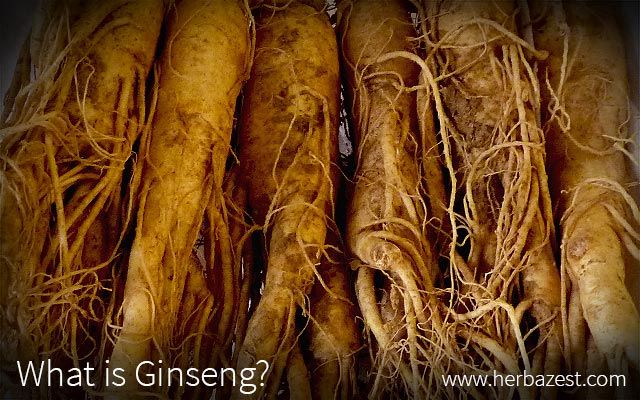The ginseng plant is well-known for its amazing curative and preventative health benefits, but what does ginseng look like?. To fully grasp what is ginseng root it is essential to briefly review its origins, botanical characteristics, history, and traditional uses. The following information will make easier ginseng identification.
About Ginseng's Origins
The origins of ginseng can be traced to China and Canada, depending on the types of ginseng.
Asian ginseng. Panax ginseng was first discovered 7,000 years ago in the Manchurian Mountains of northeast China. It is believed that around 3,000 years later, Shennong (Divine Peasant), also known as Emperor Yan, identified ginseng, among many other medicinal herbs. Panax ginseng is rated in the Shennong Bencao Jung (Shennong's Herbal Book) as one of the superior herbs.
Wild ginseng. Also known as American ginseng, Panax quinquefolius was discovered in 1716, by Father Joseph Francois Lafitau, a Canadian Jesuit priest who read a Chinese manuscript about ginseng and set out to find an American variety. After three months of searching, Father Lafitau found it, and few years after the discovery, French-Canadian traders were exporting the roots to China.
Ginseng Traditional Uses
Ginseng is one of the most popular herbs in the world for medicinal treatments and is applied to a variety of health conditions, such as diabetes, hypertension, erectile dysfunction, and menopause symptoms. Healthy individuals also consume ginseng to help boost energy and improve mental performance.
How to Identify Ginseng
Both wild ginseng (Panax quinquefolius) and Asian ginseng (Panax ginseng) belong to the Araliaceae family but offer different health benefits. Both species may look similar, but certain characteristics may help identifying ginseng:
Asian ginseng. The Chinese or Korean ginseng root has three oval leaflets with double-toothed borders, with an additional three to five leaflets growing in as the plant matures.
Wild ginseng. Also known as American ginseng, this Panax species exhibits three or four compound leaves arranged in a whorl, each with five long leaflets.
The seeds of both species of ginseng are contained inside of red berries, and both plants are best identified by the very unique appearance of their rhizomes, better known as ginseng root. The gnarled, light tan underground stem is often described as looking like the human body, which led to the popular belief that ginseng could benefit all aspects of the human health.
Ginseng Names
The Chinese translation of ginseng means 'man root', which is very similar to the term used by the Mohawk Indians of the Iroquois Six Nations in Canada, garantoquen, which means man's thigh, or more generally, man's image.
The genus name for ginseng further implies its major significance. Panax means cure all in Greek, with pan meaning all and axos meaning medicine.
The many ginseng names that exist depend on the Panax species. P. quinquefolius is often referred to as American ginseng or wild ginseng, whereas P. ginseng is popularly known as Asian ginseng or Korean ginseng. Neither of these species should be confused with Siberian ginseng, which belongs to a completely different genus and provides a different set of benefits.
Ginseng Nowadays
Whether the traditional belief that ginseng benefits all aspects of the human body is true is still up for debate. Extensive scientific research is still being done to discover the full extent of the herb's medicinal value.
Phytocompounds called ginsenosides are thought to be responsible for ginseng health benefits. So far, studies have shown that ginseng is extremely effective for lowering blood pressure in hypertensive individuals and balancing glucose levels in type 2 diabetics. Ginseng is also credited with improving memory, increasing alertness, and enhancing mental performance; however, further research is needed to corroborate these benefits.
Nowadays, ginseng is cultivated in North America and Asia, and it is available in a variety of forms, including capsules, tablets, powder, teas, and tinctures. Ginger roots can also be obtained raw and dried. These forms allows for many herbal blends, as well as for their use in culinary recipes or their consumption in capsule form.
In ancient China, Panax ginseng was known as 'the king of herbs', and it was believed to embody the mind, body, and spirit. Today, ginseng is still widely popular around the world to help cure or prevent medical conditions, stimulate the mind, and increase energy.
Ginseng has maintained its reputation as a wonder herb for thousands of years, and further research will only help discover even more of the benefits it could hold.
Sources
- Ginseng: How to Find, Grow and Use North America's Forest Gold
- HortTechnology, Asian and American Ginseng – A Review, 1995
- The Korean Academy of Medical Sciences, Brief Introduction of Panax ginseng C.A. Meyer
- Kew Royal Botanic Gardens, Panax quinquefolius (American ginseng)
- Phytotherapy Research, A Comparison of the ancient use of ginseng in traditional Chinese medicine with modern pharmacological experiments and clinical trials, 2008.
- University of Maryland Medical Center, American ginseng




